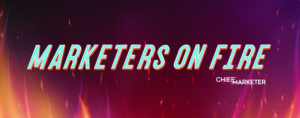
More ways for players to participate — such as designing a character or syncing up a player’s voice to a character — are being built into games. The goal here is to increase both time spent and viral sharing.
Augmented Reality, one new technology designed to pull players deeper into a brand experience for longer periods of time, is being tested by a number of marketers. The online application allows players to interact using a Web cam in real-time with computer-generated imagery, says Matt Kates, vice president of strategic services at ePrize, LLC.
Papa John’s used the application last summer to let players download and print an icon of the founder’s 1972 Camaro. When the icon was recognized by a webcam, users virtually drove the Camaro on a digital screen and could click through billboards to reach the main Web site and download coupons.
“Every time you create something yourself, you’re more likely to pass it on,” Kates says. As an example, HBO and ePrize got players to spend an average of seven minutes creating “fashionistas” by choosing different clothing, shoes and accessories in a promo to build excitement for the premiere of the “Sex and the City” movie. Players unlocked additional fashion items by entering codes received from viewing video content on affiliates’ sites.
The use of digital channels — microsites, social networks, video sharing sites and mobile — will increase as marketers continue to interact with consumers when and where consumers like to spend time.
Viral components will be built into most promotions. Many will include a prize for the most viral player.
Measurement criteria is migrating from the basics — such as how many people registered and played — to time spent, a more meaningful measure of engagement with and interest in the brand. Kates says.
Costs will continue to be more affordable as the technology becomes more established, efficient and scalable. But game development will still be relatively steep — six figures for openers — because to be popular, games will have to offer the richer experience, complexity and multiple channels that marketers are looking for, Kates says.
GAME TIME

- A STANDARD PROMOTION
generates two to four minutes of engagement per visit, with sweeps on the lower end and advergames and user-generated content on the higher end.
— ePrize
RUNNING THE NUMBERS
GAMES, CONTESTS AND SWEEPSTAKES SPENDING

| 2003 | $1.798 billion |
| 2005 | $1.804 billion |
| 2007 | $1.854 billion |
| 2009 | $1.870 billion |
Source: VSS Communications Industry Forecast
Got a contests/sweepstakes tip to share? Contact Patricia Odell at [email protected]



 Network
Network

